A tourist walking past the picturesque valley on August, 2021. (Photo Courtesy: Rachit Babbar)
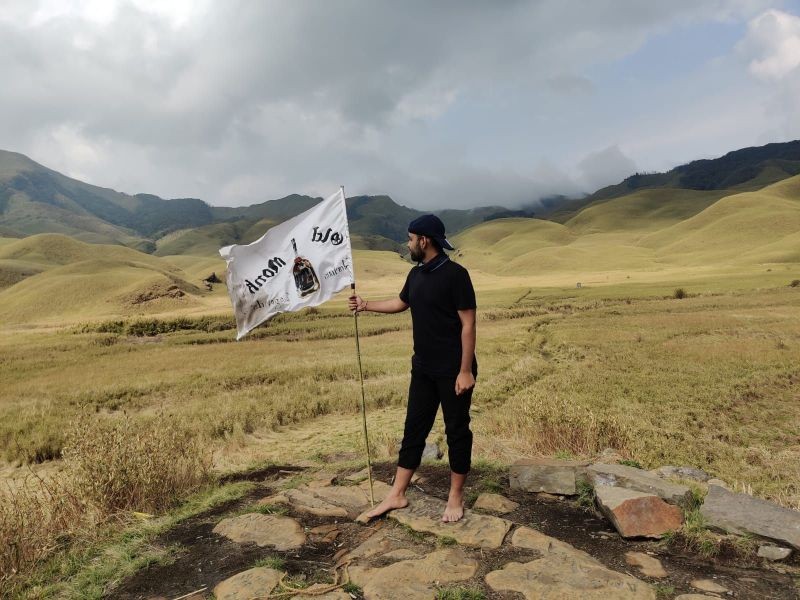
Trekkers share their moments
Kanili Kiho
Dimapur | September 8
Dzükou Valley, the compelling beauty along the borders of Nagaland and Manipur in northeast India is nothing short of breathtaking. Considered a tourist hotspot, the lush green valley is placed at an altitude of 2452 metre above sea level.
Around two hours of arduous trekking on steep hills transports the trekker to the gateway of the enchanting valley. Thence on, it takes another two-hour walk along a trail, winding through dwarf bamboo brush and wild flowers to the base camp overlooking the picturesque valley, its delicate hills seeming to ebb and flow.
After more than three months of closure, the valley is now bustling with life and an air of calm, all at once. In a bit to get to know first-hand Dzükou experiences, The Morung Express caught up with some trekkers along the way.
Bobosana Naorem, Tour Manager from Korou Tours Private Limited first visited the valley in the year 2018. The company which organizes trips for clients from around the world is based in Imphal, Manipur. Naorem has since visited the valley more than 30 times with their clients.
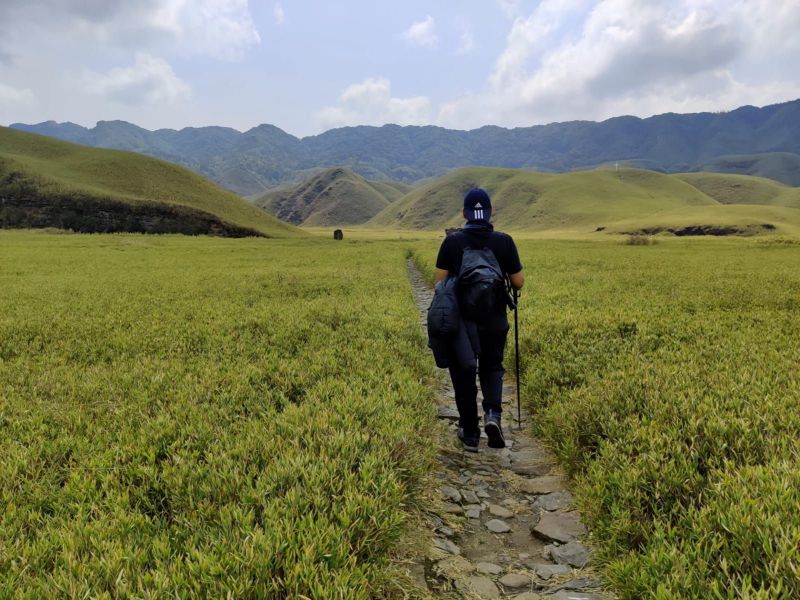
No network a luxury
“Dzükou is heaven on earth. It has so much potential in the field of tourism,” said Naorem. The fact that the valley is void of any mobile network connectivity; he termed it “a luxury in this world.” Conversely, Naorem shared his views on better management and conservation of the natural beauty.
With the valley's growing popularity, the tour manager said that during peak season where the Dzükou Lily blooms, it is flooded with more than a 100 visitors a day, making it almost impossible to pitch a tent. He suggested that the authorities could look into broadening the camping area which would solve a lot of dilemma.
He suggested the possibility of limiting the number of visitors in a day, to avoid jamming during trekking and hiking too. In this way, a balance can be maintained “in terms of crowd, noise and the harmony of the valley,” he said.
Naorem resonated to the wishes of most trekkers that a bigger canteen at the base camp providing all the basic needs will be a huge respite for anyone.
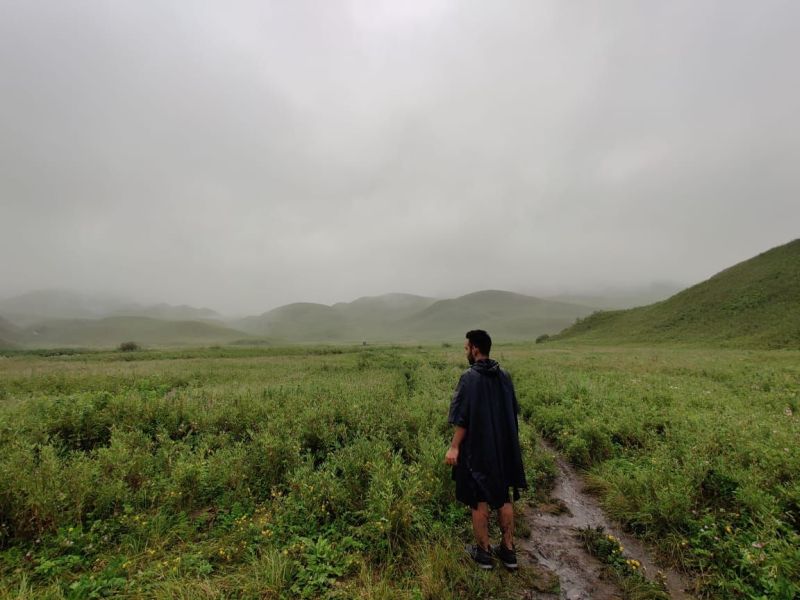
On the fuel used for cooking, he considered that an LPG (Liquefied Petroleum Gas) would be a better option to the use of firewood, in order to preserve nature. He stressed on the importance of maintaining hygiene, “All the necessary equipments and facilities provided should be hygienic, from the washroom, to the blankets etc.”
Calling upon each trekker to shoulder responsibility in keeping the site clean, he added that any scribbling or painting on the walls of dormitories, cottage or on the caves should be discouraged. Naorem spoke on the dire need of a proper disposable area, separately for plastic collection and biodegradable waste. Stating that being welcomed by a foul smell and dirt is ‘not very welcoming,’ he proposed that the authority organize events on voluntary tourism, where travelers keen on nature preservation can come together to clean the valley.
He hinted on improvising a proper booking slot which will avoid any miscommunication during bookings, and with the valley devoid of network connectivity, he said that the authority could use walkie-talkies for better coordination.
“I really love Dzükou Valley to be protected, and the current system is somehow not enough. It needs experts to improvise,” added Naorem.
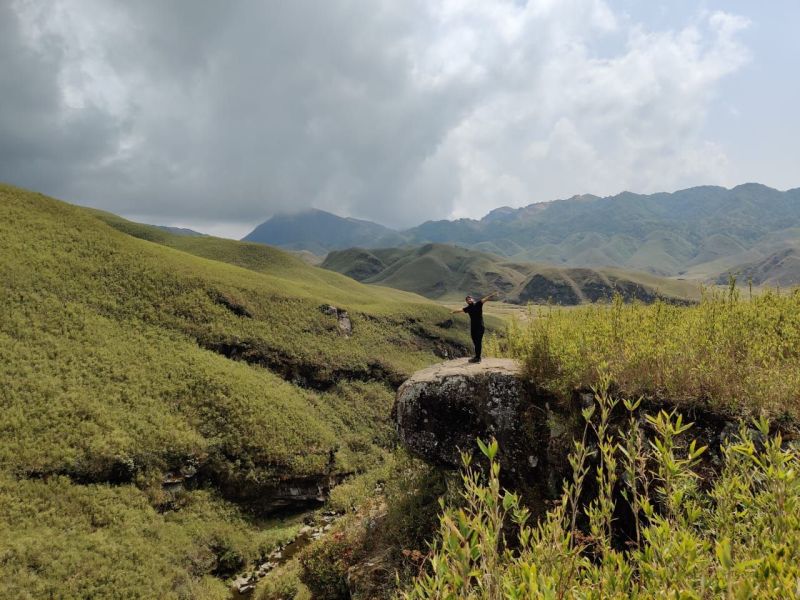
‘It just gets more serene’
For Rachit Babbar, a First Officer in IndiGo Airlines, this August was his second visit to the valley; the first being in May this same year. “I have seen this valley in two different seasons now – summer and monsoon, and it just gets more serene,” he said.
“Personally, coming from a place of cement jungles, the real jungle and the greenery, the giant mountains just gives you unprecedented peace. You don’t feel like doing anything here, but sitting and admiring the beauty.”
While confessing that it is a tough place to get to, Babbar was quick to add, “But then every step of yours is rewarded tremendously. There is a peace of mind here. This valley connects you back with nature.”
When The Morung Express queried him on any feedback, Babbar said that Dzükou could improve on the facilities being provided. “Like a cleaner and more hygienic-friendly kitchen and washrooms. Rest everything is perfect the way it is. Too much of urbanization can spoil the place,” he stated. Coming from Delhi, Babbar said that a lot of stereotypes surround Nagaland. “And today, I happily bust them after coming here twice.”
“I love it how people here live as a community, and leave no stone unturned to be helpful towards guests in Nagaland. In a time where we don’t know who our neighbors are, an entire community here functions as one entity and is there standing for each other in the hardest of times. It’s after coming here, I realize that true humans still exist and this place is full of them,” he expressed.
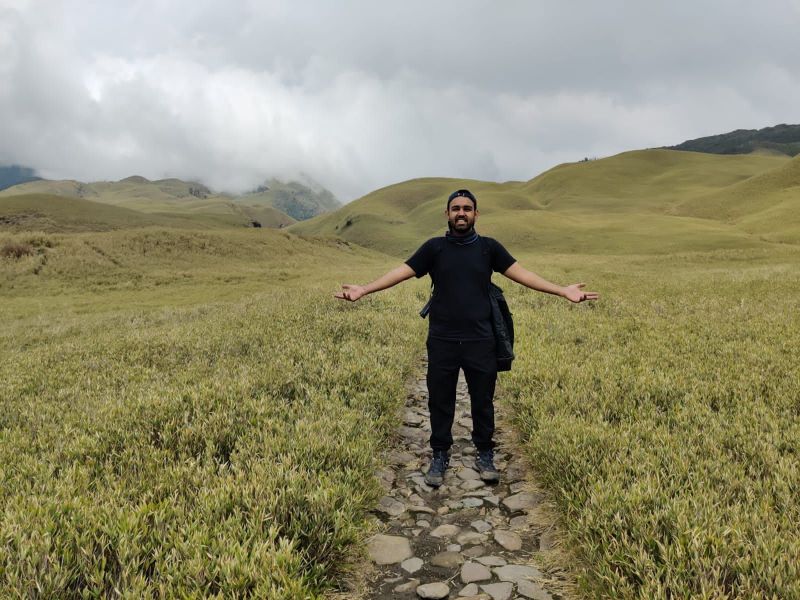
‘Take your garbage back with you’
“You have a beautiful homeland. Please take care of it. Whenever you go and hang out in some place, please take your garbage back with you. It won’t take much; just a plastic bag maybe and a little effort, but it will be a small step towards a big change. I have done my bit, I hope you will do yours,” Babbar conveyed to the youth of Nagaland.
Sentilong Imchen, an Architect/Urban Planner from Dimapur made his first trip to the valley this July. “There are some moments which the lens of a camera cannot capture what the eyes see. There you have it,” he said, exclaiming that this was enough to express how much of a beauty Dzükou really is.
Adding that Dzükou Valley is one of Nagaland’s most prized possessions, he requested all visitors to be responsible and help keep the valley clean and green. “If you bring any plastic item, kindly stuff it back and dispose it after the trek at some garbage unit. A small helping hand contributes a lot, so pick up small plastic wrappers if you see them on the way.”
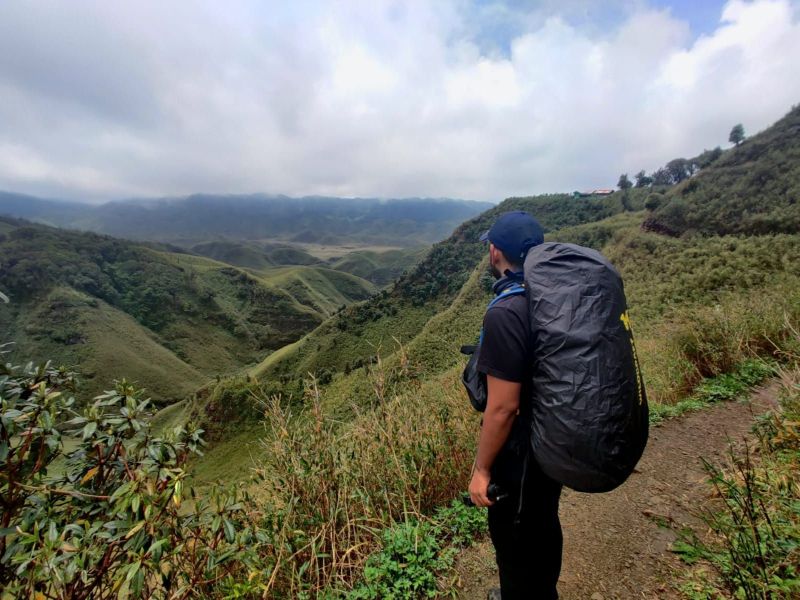
‘Every trip an escapade’
A college student from Kohima who wished to remain anonymous said he has visited the valley 56 times now, and he would not stop anytime soon. He said that every trip to the valley refreshes his soul and keeps him grounded. The one priority to tackle the waste menace urgently, is to install more dustbins at strategic locations and to chalk out a proper mechanism for waste management, he added.
Neichükho-o Nicholas Leno is a tour guide from Mima village, Kohima who just completed his 144th trip to the valley, excluding his personal trips. He started his stint as a tour guide in 2016 with India Trail, a travel company based in Kohima. Nicholas said that the valley takes on a different hue each time he visits, while adding that every trip is an escapade.
With a passion for adventure, Nicholas is now on his own as a tour guide, ‘which has its fair share of struggle.’ However, “it is high time to set an example for the younger generation. We cannot forever depend on someone to employ us. We have to employ ourselves,” he put across.
The valley at present “is getting very dirty,” and that the caretakers and the tour guides doing their part on creating awareness to be responsible trekkers is clearly not enough, he said. The absolute thing to keep the valley safe and attract more tourists is to keep it clean. And for that to ensue, Nicholas said that “each of us should be a little mindful of our ways. We should all do our part,” while adding, “And the rest will follow.”






